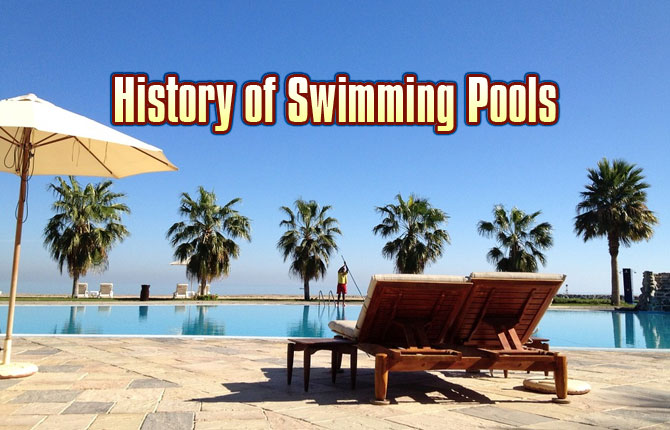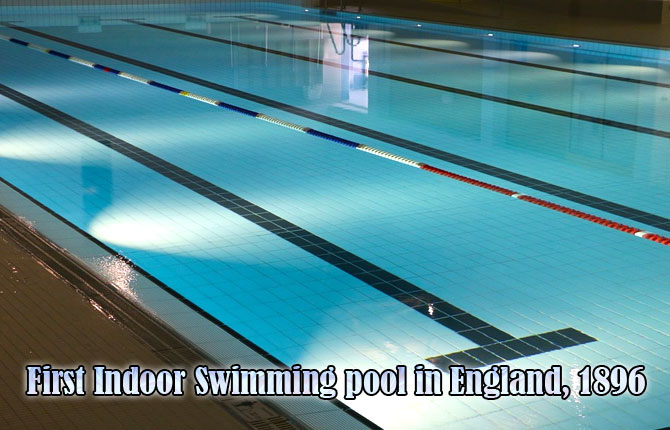Swimming pools are a solid part of American culture and with several good reasons. They offer an enjoyable and effective exercise, present a refreshing pastime, and are the source of several fun hours with your friends. These pools have been a constant feature in several comics, TV shows, and even movies.
Several households in many parts of the world have swimming pools in their own backyards, or even on the roof. The swimming pool contractors orange county is the best if you want to have one at your place. There are also great resorts with elaborate pools. When we see one of these glittering bodies of water, most of us automatically get excited to go for a swim, freshen ourselves, and relax. Since this is such an important part of our lives, it’s worth finding out some historical tidbits and other interesting facts about the swimming pool:
Emergence of the Kidney-Shaped Pool
We must have seen a kidney-shaped pool in several clubs, resorts, or even in residential homes. If not in real life, such structures are also featured in movies and TV shows. This shape isn’t random, but actually has a definite historical story behind it.
After World War II, millions of soldiers came home to their families. Some of the wives who worked during the war still continued to work afterward, creating a boost in the family income. These events helped the pool industry to flourish, so companies such as Anthony Pools and Sylvan Pools began to create irregularly-shaped pools like the “kidney” pool.
There are several reasons why a kidney-shaped pool is preferable to a standard rectangular one. It has a more natural look, making it seem similar to a pond rather than a box. The shape also makes it easier to differentiate between the deep and shallow ends.
In 1948, Thomas Church was among a team of architects that designed the multi-radius pool, which was quite an influential structure. This was called the Donnell pool and was found in the Sonoma Cliff. That particular design is what we believe inspired the modern kidney pools we have today.
Different Swimming Clubs
One of the oldest swimming organizations in England was the Maidstone Swimming Club, which was founded in 1844. The National Swimming Pool Foundation (NSPF) in the USA is a non-profit organization that offers a Certified Pool Operator license to pool professionals. This teaches them how to maintain pools in accordance with government and industry standards. This certification also accepted in many parts of the world.
The Racquet Club of Philadelphia is a private social club founded in 1906. It has facilities for squash, court tennis, racquets, and swimming. The swimming pool here is touted to be the first above-grade swimming pool in the world.
The Pool Company Merger
The Anthony Pools company was formed in 1946 by Phil Anthony, who focused on building backyard pools. Anthony Pools and another swimming pool builder, Sylvan Pools, were both innovators in the swimming pool industry. In fact, they were also both pioneers in swimming pool development, design, and installation. A pool company is always a great option that will keep your pool clean.
The Anthony & Sylvan Pools company has been building and designing quality swimming pools for over 70 years. The two companies merged in 1996 and are still providing custom pools for several areas today.
The Biltmore Hotel
We usually assume that any halfway decent hotel would have the facility of a swimming pool. This wasn’t always the case, but it definitely is now.
Hotels began to build pools to attract more clients during the 1930s. One of the hotels to feature a swimming pool was the Biltmore Hotel in Coral Gables, Florida. The hotel represented the typical South Florida lifestyle and the elite circle usually gathered there. Other hotels followed suit, with much success.
The San-Alfonso-del-Mar Seawater Pool
The San Alfonso del Mar in Algarrobo, Chile, is touted to have the biggest swimming pool in the world. This measures about 3,323 feet in length, and covers around 20 acres, containing 250 million gallons of seawater. Its maximum depth is 115 feet.
Underwater Lights
The 1960s saw many developments and enhancements done to the swimming pool, including the addition of underwater lights. These lights give an unearthly and gorgeous look to swimming pools at night.
In addition to enhancing the aesthetic of the surroundings, underwater lights in swimming pools are also a safety feature. They light up the water at night, so we can see if there’s any dangerous creature in the pool or whether anyone’s having trouble with staying afloat.
The First Indoor Swimming Pool
Swimming pools had become popular in Britain during the 19th century. The popularity actually started early in the decade, when six indoor pools equipped with diving boards first appeared in London. There are many more indoor pools in many developed countries today, but they’re still regarded as a huge luxury. Some of these pools might also be heated in order to provide a comfortable swimming experience.
The Fleishhacker Pool
The Fleishhacker Pool was a saltwater pool in San Francisco, California, and completed in 1925. It was located next to the San Francisco Zoo and was one of the biggest indoor swimming pools in the world. This pool was in operation for four decades until it closed down in 1971, mainly to poor maintenance and underfunding. It was finally demolished in 2000.
The Gaius Maecenas Swimming Pool
The wealthy Roman lord (and friend of Emperor Julius Caesar) Gaius Maecenas built the world’s first heated pool during the 1st century BC. Historians believe that this construction was in his own gardens. The extravagance of Gaius Maecenas’ villas and gardens was frowned upon by many, including the philosopher Seneca the Younger.
The Great Bath at Mohenjo Daro
During the 3rd century BC, the “Great Bath” was built in Mohenjo-Daro, which is located in what is now Pakistan. Measuring 12 x 7 meters, it is widely considered as the world’s first swimming pool ever. The city is now in ruins and frequently toured by locals and tourists, so this swimming pool might be up for viewing as well.
Getting More Detail
If the above discussion about the history of swimming pools has spiked your interest, perhaps it’s time to take things further. Be sure to check out great options like Pool Contractors in Miami for help. Check out the book called ‘The Springboard in the Pond: An Intimate History of the Swimming Pool’ in order to learn about this particular history in greater detail. It’s available at the link here:
Authored by Thomas A. P. van Leeuwen, this work is an excellent reflection on how the swimming pool became an American icon, symbolizing modernism in several ways. You’ll also get to know why these pools are such a phenomenon, both the architectural and psychological sense.
This book is unique in the fact that it investigates the swimming pool as a modern American space, where one can combine hygiene, recreation, and physical exercise. The human relationship with water is a fascinating subject and a very under-studied one. You can start with this book and then go on to similar works if you really want to delve into swimming pools and their history. There are also works on other elements by the same author, so you might want to check those out as well.
The swimming pool itself was probably built for some religious purposes. There are several complex steps and benches surrounding this pool, with a terraced deck as well. The bath itself was built using bricks and also had a gypsum finish. Interestingly, there were also waterproofing membranes here just like we have in modern standard pools.
Conclusion
There’s no doubt that the swimming pool is a great attraction for many of us. Even when it’s winter, a heated swimming pool can present a greatly attractive prospect. We also want our kids to learn swimming as soon as possible for their own security, and swimming pools are the best way to accomplish this goal. Hence, we should read up on swimming pools and their history in order to know as much as possible about this important feature of our lives.




